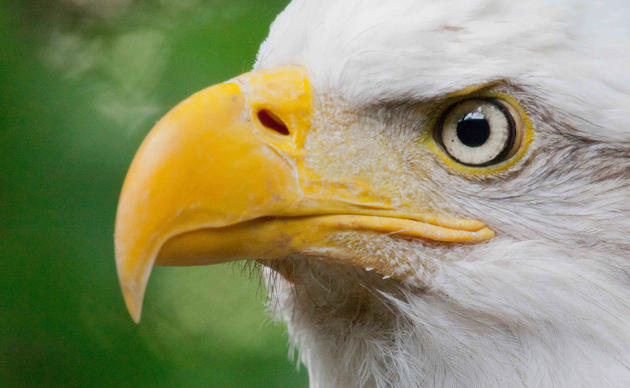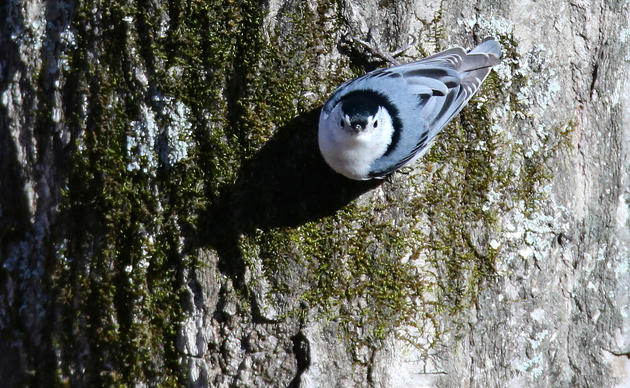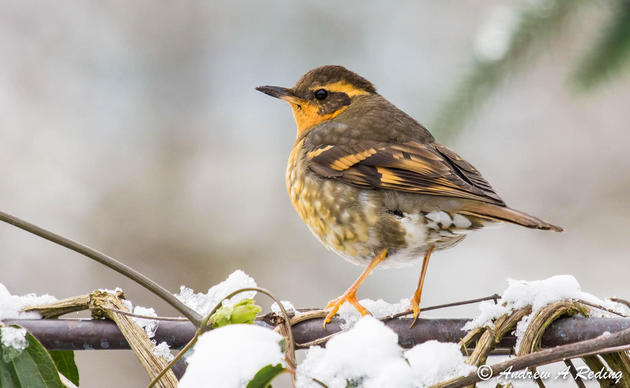For more than a century, Audubon and our supporters have worked tirelessly to protect birds and the places they need. The work of conservation takes decades. It means showing up, organizing, and buckling down, each and every day. Whenever bad news gets me down, about the state of our climate and all the work we still have to do, I think about all we’ve accomplished this year and remember the people who made it possible.
Leading on Clean Energy in Washington
Last April, Audubon Washington and a diverse coalition of stakeholders, won a huge victory in the battle against climate change. In a historic vote, the Washington State Legislature passed the strongest clean energy bill in the nation, committing the state to 100% renewable energy by 2045 and to affordably and reliably eliminating coal by 2025. “Movements need trailblazers and Washington has stepped up. The urgency to create a clean energy future has never been clearer, but it requires the leadership Washington has shown. The Evergreen State is living up to its nickname and creating a cleaner, safer future for Washington’s birds and people,” said David Yarnold, President and CEO of National Audubon Society.
Community Conservation at Seward Park
The Seward Park Audubon Center serves as a community hub for conservation in Seattle—welcoming all to explore science, steward nature, and take action to protect birds and the places they need. This year, we continued to partner with local schools, offered teen leadership training, hosted “Owl Prowl” night hikes, restored the forests in our park, and explored science with our community. We are committed to making sure the conservation movement includes all voices, because we know that, just as biodiversity strengthens natural systems, the diversity of human experience strengthens our conversation efforts for the benefit of nature and people.
60 Community outreach programs
20,000+ Program attendees
900+ Students received scholarships for school field trips
650+ Volunteer hours
1,990 Native plants sold
Protecting the Birds of Puget Sound
Puget Sound’s vast array of inlets, bays, and lagoons where salt and fresh water meet, are rich in nutrients that provide sustenance and habitat for countless plants, animals, and people. That’s why we’re leading the Puget Sound Ecosystem Monitoring Program Marine Bird Workgroup to elevate the needs of birds in the restoration and protection of coastal estuaries. This summer, we published our recommendations for monitoring birds in these ecosystems. With your support, we’ll work with agencies, tribes, NGOs, community leaders, and cultural stakeholders to put these recommendations to work, ensuring a Puget Sound that supports both people and wildlife.
Sagebrush Songbird Survey Completed
On the east side of the Cascade Mountains lies Washington’s majestic Sagebrush Sea, a shrubsteppe ecosystem only found in western North America. This unique and fragile landscape is home to a diverse array of threatened and endangered plant species and the birds that depend on them, including the Brewer’s Sparrow, Sage Thrasher, and Sagebrush Sparrow. This spring, thanks to your support, we completed a six-year, $1M+ effort to survey the songbirds of Washington’s Sagebrush Sea. The data from this million-acre survey is already being put to use protecting the most important places for birds in Eastern Washington. As Washington moves to 100% clean energy, your support is essential in ensuring that decision-makers use this science to promote renewable energy projects that work for birds, people, and our lands.
300 Volunteer scientists
15,000 Hours
385 Sites surveyed
Survival By Degrees rollout in Washington
In October, National Audubon Society announced a groundbreaking new climate report, Survival by Degrees: 389 Bird Species on the Brink. As the climate changes, so will the places birds need. Audubon scientists took advantage of 140 million observations, recorded by birders and scientists, to describe where 604 North American bird species live today. They then used the latest climate models to project how each species’ range will shift as climate change and other human impacts advance across the continent. Birds will be forced to relocate to find favorable homes, and they may not survive.
Let’s make 2020 even better. Sign up to advocate for the birds and the places they need at audubon.org/actionnetwork



